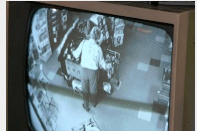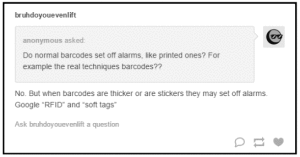Training your security personnel how to handle shoplifters, and the security and safety measures they need to take before stopping anyone believed to be shoplifting cannot be stressed enough. Lawsuits are predominant in our culture, and safeguarding yourself and your business from possible lawsuits and loss of money is imperative if you want to make a profit. Well trained security personnel can be an asset to your store, the money you spend training them and educating them is well worth it. Follow the links to read more about this and other topics.
Shoplifter who suffered skull fractures, brain damage wins $750,000 in lawsuit against store
He was convicted of stealing two pairs of miniature scissors from Shopko.
But his punishment came long before his court case ended.
In November 2008, Richard “Dave” Moore suffered several skull fractures and a brain injury when he was thrown to the ground by a Shopko loss-prevention officer outside the retailer’s store at 90th and Fort Streets.
Friday afternoon, a jury of 12 Douglas County residents ordered Shopko to pay $750,000 to Moore in a civil lawsuit Moore brought alleging that Shopko employees used excessive force.
Moore, 59, was overwhelmed by the verdict, said his attorney, Richard Schicker of Omaha.
“He started to cry,” Schicker said. “He said, ‘Thank you so much — you saved my life. I would have never made it if we didn’t win this case.’”
An attorney for Shopko couldn’t be reached for comment. It is unclear whether the retailer will appeal.
Over the past week, jurors heard testimony of an ordeal that began Nov. 23, 2008.
AN ACCUSED shoplifter has been shamed on social media over the brazen theft of bikinis caught on camera at a surf wear store in Fannie Bay.
Fed-up owner of Beach Bums, Mary Meyer, posted CCTV footage of the alleged thief pocketing more than $200 worth of bikinis on the store’s Facebook page.
The post has gone viral, with more than 45,000 views and 1800 shares along with messages of support from business owners since Sunday.
The minute-long clip captured the thief — wearing a black singlet-type top and sunglasses on her head — putting bikinis in her bag as other shoppers browsed beside her for a pair of swimmers.
Ms Meyer said she checked the CCTV after discovering empty hangers on the rack.
She posted the clip with the intention of publicly shaming the alleged thief.
“I put it up to shame her because it shouldn’t be happening. I was very surprised (by the reaction), I just didn’t think it would go like it did. I guess people don’t like it either,” she said.
The lead defendant in a shoplifting ring that stole more than $2.5 million in retail goods and resold them on eBay was sentenced Tuesday to seven years in prison, announced United States Attorney Benjamin B. Wagner in press release.
A restitution hearing is set for Dec. 1.
Jason Samuel Schroeder, 36, of Sacramento, is the sixth defendant sentenced to prison in this case. Kirk Arthell Sanderson, 37, of Walnut Creek, was previously sentenced to four years in prison; John Judah Young, 34, of Sacramento, was sentence to two and one half years in prison; and David Reed, 29, of Vacaville, was sentenced to one year in prison. Two others, Andrea Lynn Turner, 34, of Roseville, and Joshua Roy Payne, 30, of Vacaville, also were sentenced to two months in prison. Jason Nathaniel Reed, 36, of Portland, Ore., is scheduled for sentencing later this year.



 eir knowledge to others who may be new to the game. Much like a tenured LP manager taking a green agent under their wings.
eir knowledge to others who may be new to the game. Much like a tenured LP manager taking a green agent under their wings.







